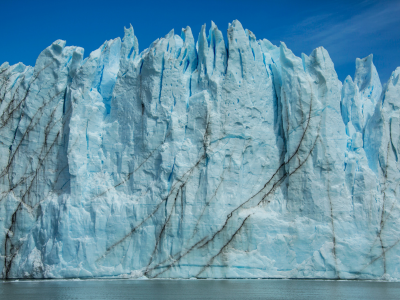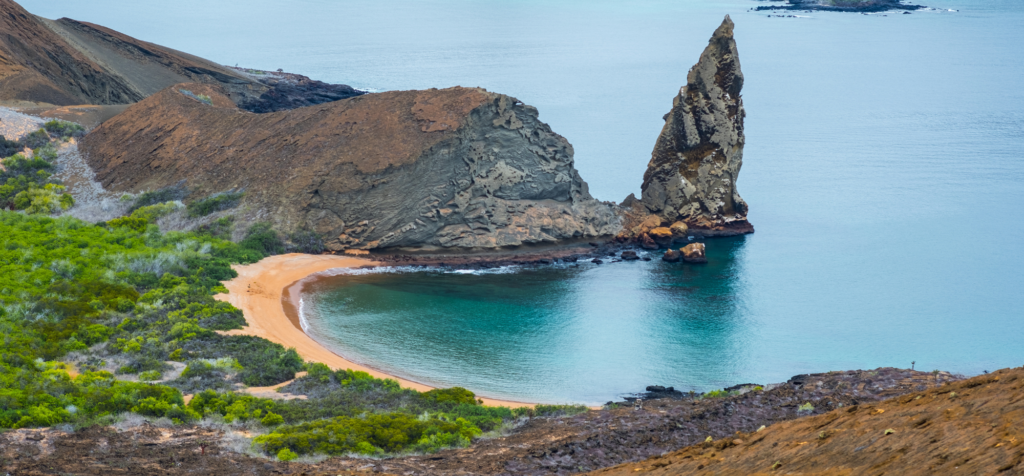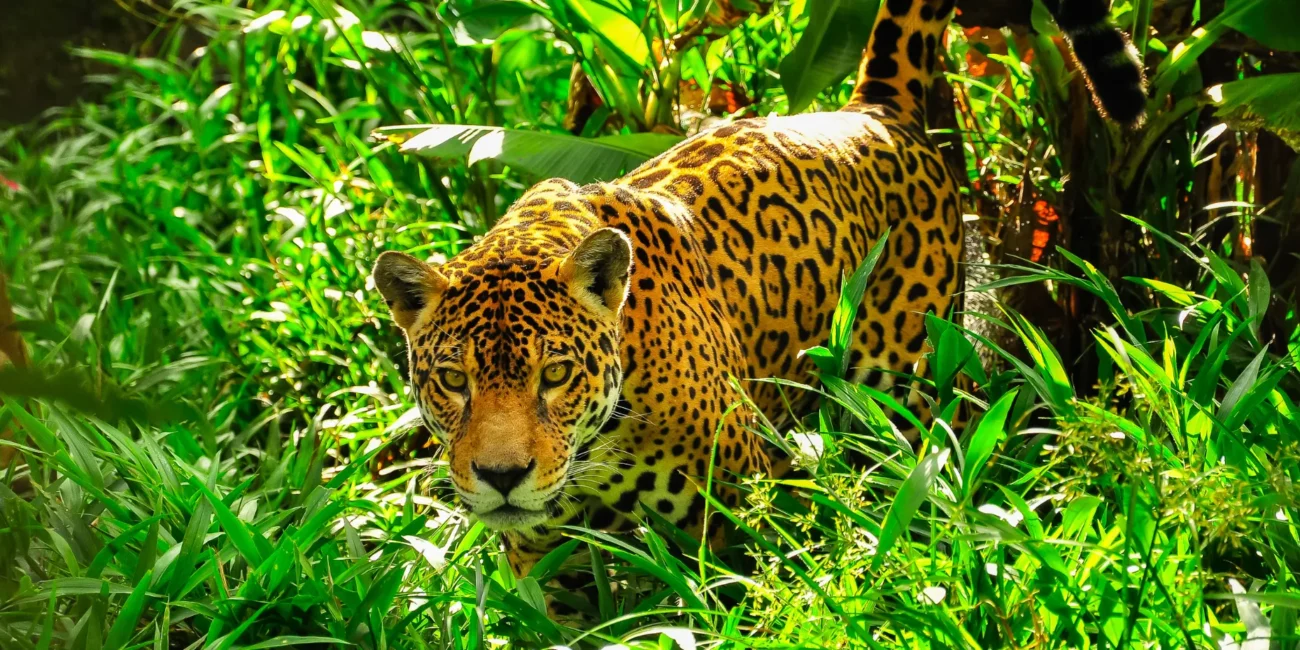The national parks in Latin America are breathtaking, with diverse landscapes ranging from towering glaciers in Chile to lush tropical rainforests in Costa Rica and jaguar conservation areas in Belize. These areas of immense natural beauty enable you to immerse yourself into the rich biodiversity and culture this continent has to offer, where you’ll explore the unique ecosystems and learn about the traditions of the indigenous people.
Here is our list for the best national parks in Latin America.
Torres del Paine National Park, Chile
Located in the southern reaches of Chile, the Andes are at their most spectacular here, with jagged peaks rising from bright blue fjords and turquoise lakes.
A true Patagonia adventure awaits in Torres del Paine National Park. The hiking here is legendary, with routes varying from a few hours to a few days’ expedition across the 1,814 square kilometre wilderness. The landscapes are rewarding, with colossal glaciers, snow capped summits and roaring waterfalls juxtaposing the vast open plains.
Go kayaking on glacial lakes that sparkle or ride horses through forests and across pampas plains with the local gauchos, learning about their traditional ways of life in this unforgettable setting.
Los Glaciares National Park, Argentina
Los Glaciares National Park can be found at the heart of Argentine Patagonia. Spanning over 7,000 square kilometres, this UNESCO World Heritage Site is renowned for the sheer scale of its stunning glacial landscapes and rugged mountains.
The Perito Moreno Glacier dominates the landscape, where deep blues merge with ethereal whites, creating a symphony of hues that sparkle in the sunlight. Watch glacial calving from the boardwalk or boat as chunks of ice break off and thunder into the milky blue waters of Lake Argentino below. If you are feeling adventurous, you can even scale the ice field with crampons, appreciating the ice caves and pools along the way.
Admire with awe as you explore the landscape on foot, or even horseback, on the lookout for guanacos, Andean condors, foxes, and bird species. If you tackle the 22 km trek to Laguna de los Tres, you’ll be rewarded with breathtaking views of Mount Fitz Roy.
Tortuguero National Park, Costa Rica
Incredible biodiversity and tropical rainforests make up this natural park, situated on the Caribbean coast of Costa Rica, which is best known for its entangled ecosystem of winding rivers, canals, lagoons, and beaches.
Navigate Tortuguero by boat or canoe using the extensive network of waterways, where you’ll pass through dense foliage, alive with movement and sound. Monkeys swing overhead, their playful chatter blending with the calls of exotic birds like toucans and parrots. Observe and immerse yourself into the rich tropical haven around you, where three-toed sloths hang lazily from branches and river otters frolic in the water alongside you.
During nesting season, in July and August, hundreds of green sea and hawksbill turtles come ashore to lay eggs in the sand. Watch this process in action and learn more about the conservation efforts being made to protect these magnificent creatures.


Cahuita National Park, Costa Rica
On the south side of the Caribbean, this beautiful and ecologically rich national park in Latin America can only be described as paradise.
Follow the well maintained hiking trails through the rainforest on the lookout for monkeys and sloths with scenic coastal views before reaching the soft white sands, fringed with coconut palms. Off-shore, the vibrant coral reefs are teeming with bright tropical fish, rays, nurse sharks, and various types of sea turtles. The warm, clear waters are perfect for experiencing these creatures in their natural habitats through diving or snorkelling.
The culture and traditions in this region are rich, rooted in medicinal plants. Learn more about the indigenous Bribri culture and traditions through a hands-on course in traditional cacao cultivation, following the process from picking the pod to sampling the delicious chocolate it creates.
Iberá National Park, Argentina
Explore the world’s second largest wetland in northeast Argentina, where the tranquil waterways and scenic trails offer a peaceful escape into nature.
Trek among the rich tapestry of lakes, marshes, plains, and forests which are home to capybaras, marsh deer, and howler monkeys, as well as jaguars, tapirs, and giant anteaters which have been gradually reintroduced as part of a rewilding program.
The rewilding of Iberá National Park is a pioneering conservation effort, aiming to restore the native ecosystem by reintroducing keystone species that had vanished from the region. These efforts not only revive biodiversity but also empower local communities through ecotourism and sustainable development.
Canoe or boat down the winding rivers and try spot the 360 different bird species hidden in the foliage of the park. Some of the wildlife is better spotted in the dark, so night game drives are also an option here.
Galapagos National Park, Ecuador
The world famous UNESCO World Heritage Site, located 1,000 kilometres off the coast of Ecuador, is home to many endemic species totally unique to the archipelago, including the Galapagos giant tortoise, marine iguana, and several species of Darwin’s finches.
Explore the volcanic islands, with rugged cliffs and lava fields, where the wild beaches stretch for miles. The clear, blue waters are alive with marine life. Encounter colourful tropical fish, sea turtles, marine iguanas, rays, and even hammerhead sharks while snorkelling or diving amongst the coral reefs and underwater caves.
Weave in between the archipelago’s islets onboard your own sailboat, where you can enjoy Relais & Chateaux dining and relaxing on the sundeck, while watching sea lions and fur seals play in the turquoise ocean around you. As the skies begin to darken, gaze upwards for incredible views of the planets and constellations.
Each of the national parks in Latin America tell powerful stories of conservation, culture, and connection. Whether witnessing glacial calving in Patagonia, tracing the paths of rewilded jaguars in Iberá, or learning from indigenous communities in Costa Rica, these are experiences that stay with you.
At Journeys With Purpose, we design transformational travel experiences that deepen your understanding of the world and contribute to its protection. Every journey supports local conservation and community initiatives — with opportunities to engage first-hand along the way. Get in touch to find out more.
DIG A LITTLE DEEPER
Contribute to Positive Impact on a Hosted Journey.
Connect with Impact Partners around the world during a Private Experience.





